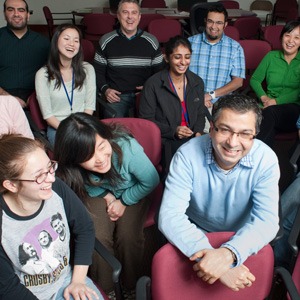Organization and Leadership
The National Institutes of Health (NIH) is made up of 27 Institutes and Centers, most of which include research programs led by a Scientific Director and conducted by federal researchers and their trainees at one of several NIH campus locations. Collectively, these research programs comprise the Intramural Research Program (IRP).
As a whole, the IRP is the largest institution for biomedical science on earth, with a scientific staff of approximately 1,200 Principal Investigators and 4,000 post-doctoral fellows. The IRP includes the National Library of Medicine, a national treasure and vital resource for researchers around the world, and the NIH Clinical Center, the world’s largest clinical research hospital designed to foster smooth transitions among laboratory work, patient studies and bedside cures.
Intramural researchers are part of individual Laboratories, Branches or Centers, which are organized around common thematic research goals and approaches, much like a department or center at an academic institution. Within these larger structures, Principal Investigators run Sections or Units devoted to their independent research aims. Core facilities, supported by Staff Scientists and Staff Clinicians, are among the shared resources available to IRP researchers.
Principal Investigators receive support for their research from their Institute or Center and are reviewed once every four years by an external Board of Scientific Counselors, which provides recommendations to the Scientific Director about the quality and value of the research being performed.
The Office of Intramural Research (OIR), housed within the NIH Office of the Director, is responsible for oversight and coordination of all intramural research, training, and technology transfer activities. The OIR also develops and implements NIH-wide projects, policies, standards, and review for intramural research, training, and technology transfer. Nina F. Schor, M.D., Ph.D., Deputy Director for Intramural Research, leads this office.
Continue Exploring the IRP
This page was last updated on Thursday, November 3, 2022

